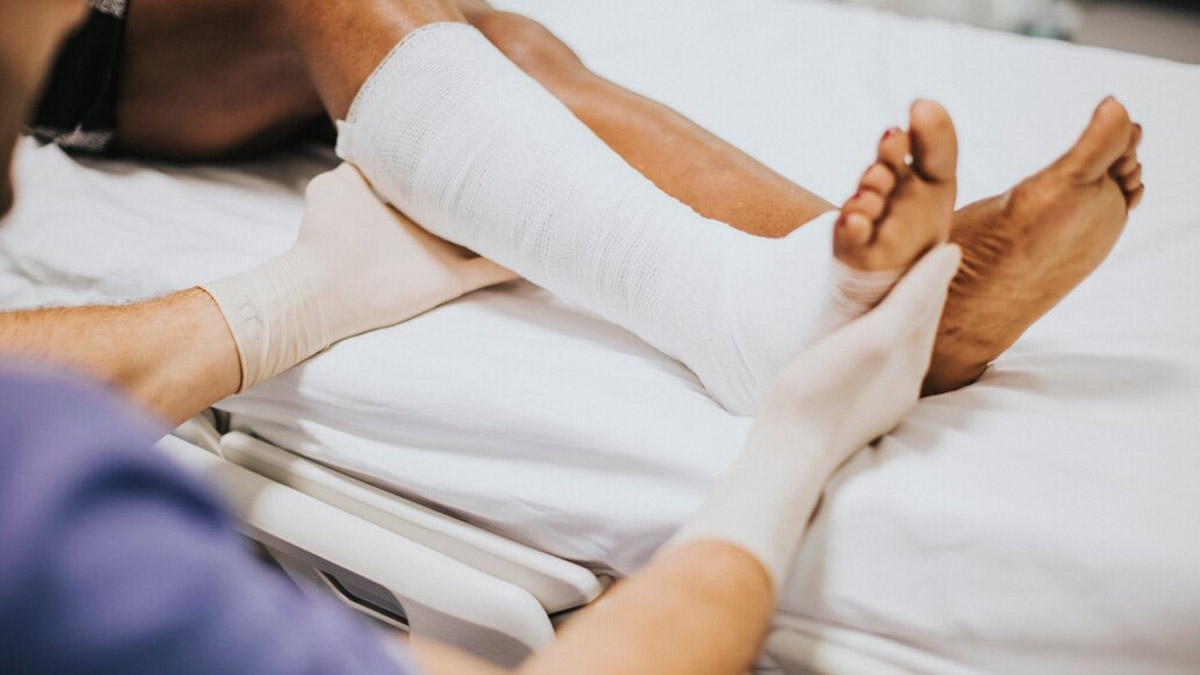Cold weather can increase the pain related to old injuries for several reasons, although individual responses may vary.
“Even though old injuries are capable of healing, one may still feel sudden bursts of pain in the previously injured joints when the weather is cold. Here, we help you to understand the factors behind the worsening pain,” said Dr Pramod Bhor, Director of Orthopedics and Robotic Joint Replacement Surgeon, Fortis Hospital, Vashi.
“One’s body endures significant strain from our daily activities, often resulting in muscle and joint tension. If you have suffered orthopaedic injuries from an accident, the discomfort may be exacerbated. Although these injuries can heal, you might still experience pain in cold weather. Know why the pain from old injuries worsens when the temperature drops,” He added. Some common factors contributing to increased pain in cold weather include:
Vasoconstriction
Cold temperatures can cause blood vessels to constrict or narrow. This vasoconstriction reduces blood flow to certain areas of the body, including injured or compromised tissues. Insufficient blood flow may result in decreased oxygen and nutrient supply to the affected area, leading to increased pain and stiffness.

Joint Stiffness
Cold weather often contributes to joint stiffness, especially for individuals with arthritis or previous joint injuries. The synovial fluid that lubricates joints may become thicker in cold temperatures, limiting joint mobility and causing discomfort.
Muscle Contraction
Cold weather can prompt muscles to contract or tighten. For individuals with old injuries, especially those involving muscle strains or tears, increased muscle tension can lead to heightened pain and reduced flexibility.
Nerve Sensitivity
Cold temperatures can make nerves more sensitive, potentially amplifying pain signals. This heightened sensitivity may be particularly noticeable in individuals with nerve-related injuries or conditions.
Reduced Physical Activity
Cold weather often discourages outdoor physical activity. Reduced movement and inactivity can contribute to muscle stiffness and decreased joint flexibility, leading to increased pain for individuals with old injuries.
Changes in Atmospheric Pressure
According to Dr Bhor, in chilly conditions, the atmospheric pressure shifts, impacting the fluid in your body, particularly around your knees and ankles. When it’s cold, the barometric air pressure decreases rapidly. This drop in pressure causes gases and fluids around the knees and ankles to expand quickly. As these fluids expand, they gather and create uncomfortable pressure on the nerves, reawakening old injuries.
Psychological Factors
Cold weather can also impact mood and psychological well-being. Changes in weather may lead to feelings of discomfort or gloominess, which can influence the perception of pain. Also, people with a history of trauma or injuries may have negative associations with cold weather.
Also read: Here’s How Squats Can Reduce Your Risk Of Injury
Scar Tissue Sensitivity
Scar tissue from previous injuries may be more sensitive to temperature changes. Cold weather may exacerbate the sensitivity of scar tissue, causing discomfort or pain in the affected area.
Strategies To Manage Old Injuries In Cold Weather
To manage pain related to old injuries in cold weather, individuals can consider the following strategies:
“Maintaining an active lifestyle and regularly engaging in exercise is essential for rebuilding muscle strength. During the winter months, a lot of individuals tend to avoid physical activity. Thus, lack of movement can lead to stiff joints, muscles, and tissues, as well as exacerbate old injuries causing discomfort,” said Dr Bhor.
Stay Warm
Dressing in layers, including keeping the affected area warm, can help mitigate the effects of cold weather on old injuries.
Maintain Physical Activity
Engaging in regular, gentle exercises and stretches can help prevent stiffness and maintain joint flexibility. Indoor activities or exercises in a heated environment can be beneficial.
Use Heat Therapy
Applying heat packs or using warm baths can help relax muscles, improve blood flow, and alleviate pain associated with cold weather.
Stay Hydrated
Drinking an adequate amount of water is essential for maintaining joint health. Hydration supports the lubrication of joints and may reduce stiffness.
Also read: Anterior Cruciate Ligament Injury: What If It Is Neglected?
Consider Pain Management Techniques
Techniques such as mindfulness, relaxation exercises, or pain management strategies recommended by healthcare professionals can help individuals cope with pain during colder weather.
If cold weather exacerbates pain to a significant extent, or if there are concerns about the impact of weather on an old injury, it is advisable to consult with a healthcare provider. They can provide personalised advice, recommend appropriate interventions, and address specific concerns related to the individual’s medical history and condition.




You must be logged in to post a comment.